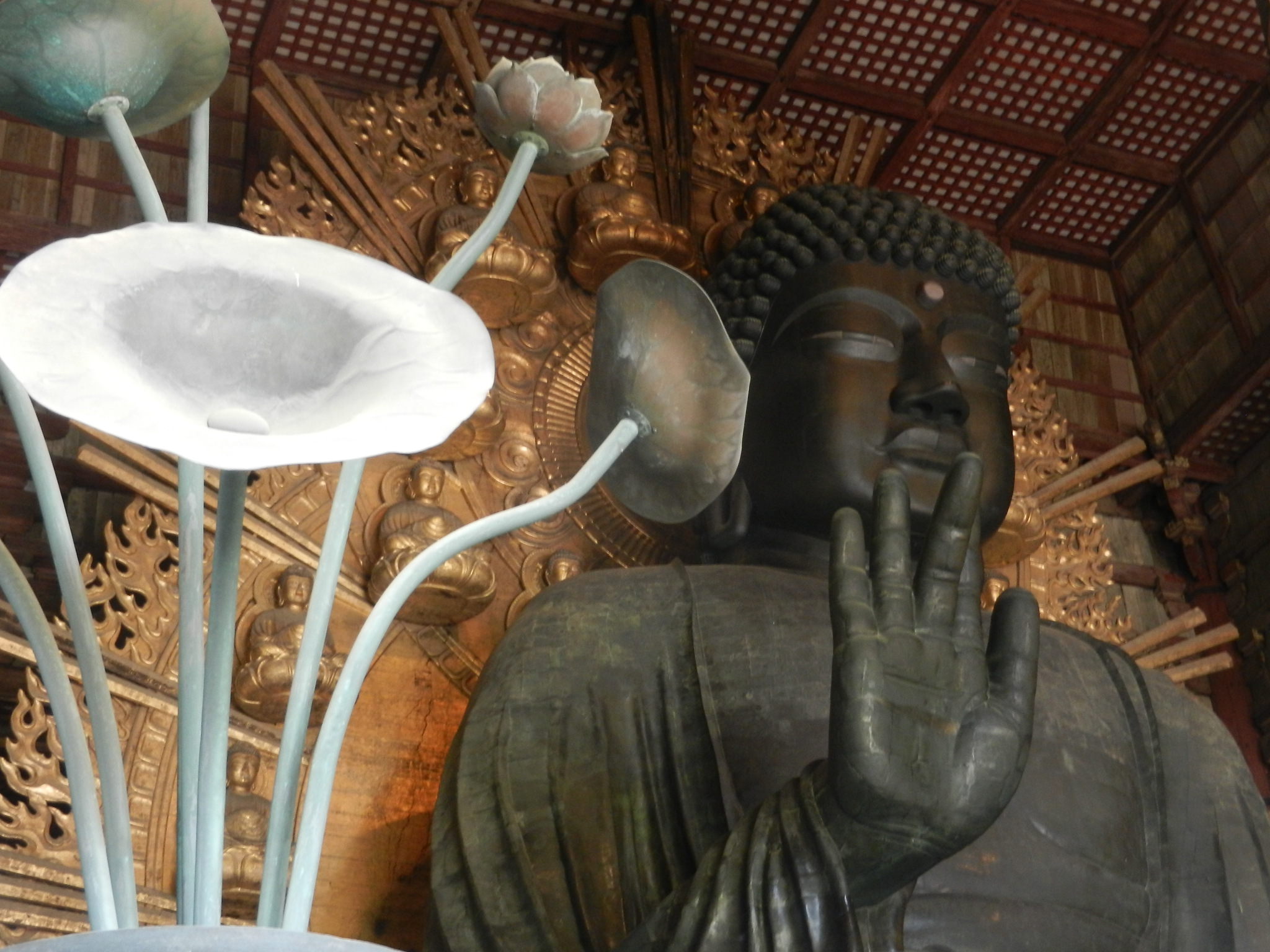Buddhism entered Japan in its Mahayana form from Korea in the 6th century, the official date being 552. This time saw the unification of different local tribes under the still ruling imperial house of Japan, the Yamato clan from central Honshu. Especially the administration of Prince Shotoku (573-621), a senior official of the Soga clan, saw the creation of national Buddhist temples, the codification of laws along the Confucian model, and the introduction of written documentation and formal ethics. The rulers had a moving capital at the time to keep a better eye on their subjects. Their main area of influence was centered south of Nara, where archaeological traces still remain.
In 710, the capital was for the first time firmly settled in Nara, after which this time is called the Nara period (710-794). Centrally planned, Nara was a splendid city with many palaces and temples, arranged in alignment with Chinese city planning. Also following the Chinese model and using the Chinese language, the rulers ordered the compilation of the first official histories of Japan, the Kojiki and Nihonshoki. Nara Buddhism consisted of six schools, directly taken over from the mainland. They included classical schools such as the logistical Sanron (Madhyamika), the speculative Hosso (Yogacara), the philosophical Kegon (Avatamsaka), and the moralistic Ritsu (Vinaya). Few survive today. Ordination into any of the schools was sponsored by the government and held at a formal kaidan (ordination platform) in central Nara. Many aristocrats chose to become monks and the schools were very influential in politics, so much so in fact that the imperial government decided to move the capital to escape their impact
The new capital was Heian, modern Kyoto. The 200 years of the Heian period (794-1185) were the golden age of Japanese history. There were no invasions, no civil wars, no strife, and very few famines. A new syllable script called hiragana was created, allowing the indigenous expression of literature. The first novels were written by two court women, Sei Shonagun and Murasaki Shikibu. As can be seen from their accounts, the key issues of people in the capital were who had sex with whom and what so-and-so was wearing and doing. A very peaceful world.
The city was built in imitation of the Chinese capital of Chang’an, thus its grid layout and straight roads. Its center was near Nijo Castle. All Buddhist institutions had to be far removed from this center, to prevent the domination of politics by monks. The eastern mountains on the other side of the river were seen as spirit domains and used dominantly for cemeteries, and to the present day the largest cemetery is on the hill leading up to Kiyomizu Temple. The Nara schools for the most part did not join the move. They stayed in Nara, where they kept the main ordination platform and tried to dominate events from there. Still, Kiyomizu Temple is an institution of the Hosso school, which has made it open to all kinds of Buddhist forms and the universally popular temple it is today.
Two new Buddhist schools arose, both based on senior monks traveling to China for more details and new scriptures: Tendai and Shingon. Tendai, named after the Chinese Mount Tiantai (SW of Shanghai), was founded in China in the 6th century to create an overarching integration of Buddhist teachings. It does not specialize in philosophy, ritual, ethics, meditation, or chanting, but ranks all different Buddhist practices in a hierarchy, acknowledging in Mahayana fashion that different people have different needs and thus will use different ways to reach enlightenment.
Around the year 800, the Japanese monk Saicho, posthumously named Dengyo daishi (766-822) traveled to China and studied on Mount Tiantai, where he received the official transmission of this school. Upon his return in 806, he was given Mount Hiei to the northeast of Kyoto as headquarters for his new school and charged with the duty to ward off the demons who were thought to arise particularly in the northeast. His school grew quickly and became very popular, since it also allowed simple methods, such as chanting the Buddha’s name (nembutsu) as practice. It also emphasized the Lotus Sutra and the saving power of the bodhisattva Kannon (Skt. Avalokitesvara, lit. “he who hears the sounds of all the world”), still one of the most popular Buddhist deities.
At the same time, the monk Kukai (Kobo daishi, 773-835), a former government official, traveled to China in search of Buddhist scriptures. Instead of Mount Tiantai near the eastern coast, however, he studied in the capital of Chang’an (modern Xi’an), where at the time the Tantric teaching was dominant, known by the name Shingon (Chin. Zhenyan), which means “true word” and indicates the powerful mantras used by the school. When Kukai brought this to Japan, he established its headquarters on Mount Koya south of Osaka but also maintained several centers in Kyoto—notably Toji near Kyoto Station and Daigo Sampoin in the depth of the eastern mountains. The school uses chants (mantra), spells (dharani), visual illustrations (mandala), and sacred gestures (mudra) in an effort to attain enlightenment in this body. It is also fairly ascetic and highly elitist, placing major tests before admitting any newcomers. Yet the school became also popular, since people took to the idea of chanting spells and enjoying visual images, and Kukai traveled widely all over Japan. A pilgrimage of 81 temples in his honor is still popular on the island of Shikoku.

Leave a Reply